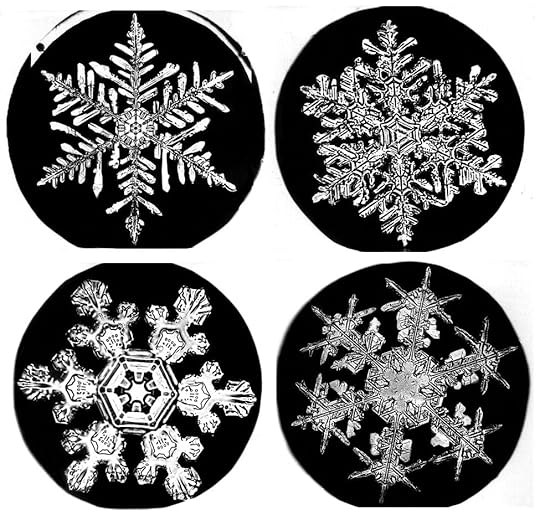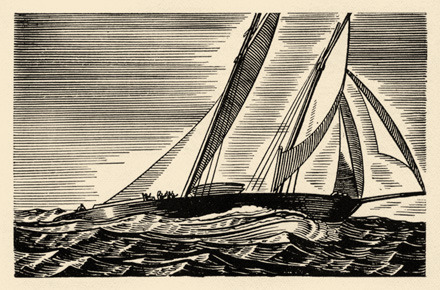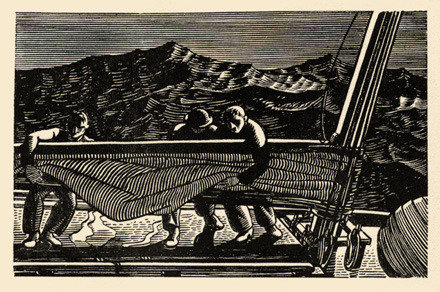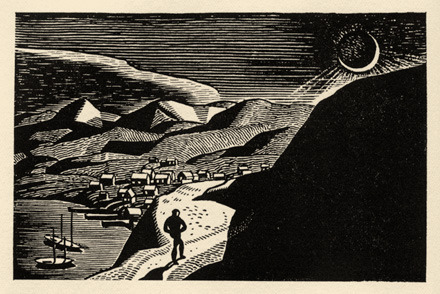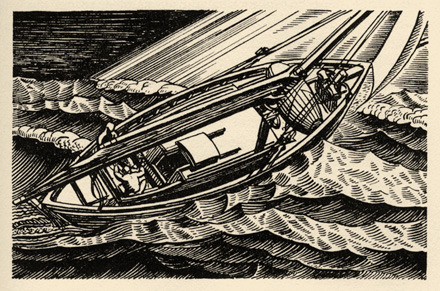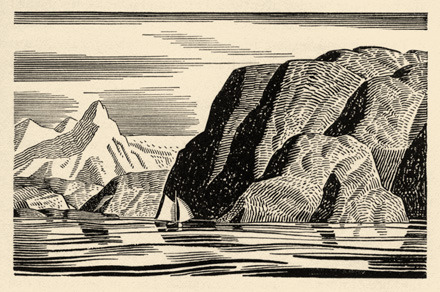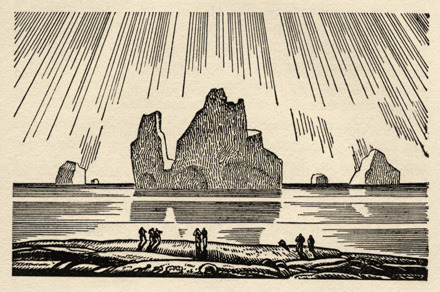John Lechner's Blog, page 4
March 6, 2013
The Snowflake Man
 Wilson Bentley was a Renaissance man. He had no formal training in science or art, yet he had a talent and a passion for both. In 1885 he became the first person to photograph a single snow crystal, and would go on to photograph more than 5000.
Wilson Bentley was a Renaissance man. He had no formal training in science or art, yet he had a talent and a passion for both. In 1885 he became the first person to photograph a single snow crystal, and would go on to photograph more than 5000.
His story is just as inspiring as his work. His father, a farmer, did not appreciate his son’s scientific ambitions, but his mother encouraged him. Bentley later recalled, “When the other boys of my age were playing with popguns and sling-shots, I was absorbed in studying things under this microscope: drops of water, tiny fragments of stone, a feather dropped from a bird’s wing, a delicately veined petal from some flower.”
But it was snow that fascinated him most, and he spent over a year experimenting with a bellows camera and microscope trying to photograph the elusive crystals. Once he succeeded, it was thirteen years before he published his work in Popular Scientific Monthly and caught the attention of the scientific world.  Yet he never sought to make a profit from his work, and sold prints of his photographs for pennies because he wanted people to enjoy them.
Yet he never sought to make a profit from his work, and sold prints of his photographs for pennies because he wanted people to enjoy them.
He wrote, “Under the microscope, I found that snowflakes were miracles of beauty; and it seemed a shame that this beauty should not be seen and appreciated by others. Every crystal was a masterpiece of design and no one design was ever repeated. When a snowflake melted, that design was forever lost. Just that much beauty was gone, without leaving any record behind.”
It is all too true that often the most beautiful things in life are with us for the shortest time. Luckily we have the photographs of Wilson Bentley to preserve at least some of them.

.
The following video report gives a brief overview of his life:
.
The story of Wilson Bentley has inspired other artists as well. He was the subject of the Caldecott Award-winning book Snowflake Bentley by Jacqueline Briggs Martin and illustrated by Mary Azarian.
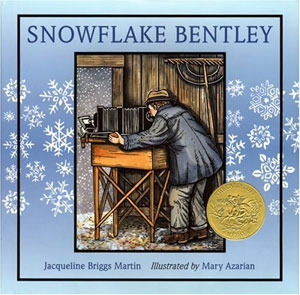
He also inspired an award-winning solo theater production, created by Sarah Frechette of Puppetkabob. Using Czech-style marionettes, miniatures, pop-up paper art, music and live storytelling, she brings Wilson’s story to life. You can learn more about the making of her production here.
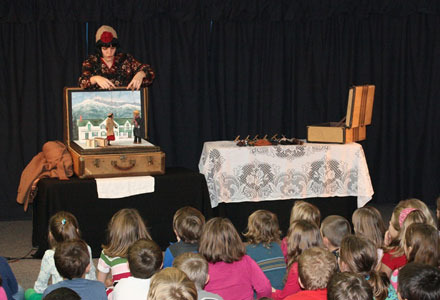
You can learn a lot more about Snowflake Bentley and his amazing work at the official website.
.
November 13, 2012
A floating forest on the freeway
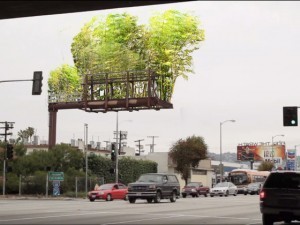
Usually when an art and nature intersect, the work of art depicts or recreates the natural world, and is displayed indoors far from its subject. Sculptor Stephen Glassman uses the natural world to create art in public places, bringing art, audience and nature together for a shared experience. He designs giant sculptures using bamboo and inspired by natural forms, inserting nature into urban settings in ways that are surprising and dramatic. You can see some of his amazing works here and here.
Now he is embarking on a project to convert billboards into living bamboo gardens. Urban Air is the name of this new venture, and he has started a Kickstarter campaign to produce the first prototype in Los Angeles. He will also produce a system kit so that other unused billboards can be likewise transformed into floating gardens around the country.
Watch the video to learn more about this amazing project, or visit the official site.
* * *
October 24, 2012
A glimpse at my own untended garden

About once a year I take a break from my usual postings here to show you a peek into my own garden, which is almost as untended as this website.
One of my favorite things about having a garden is seeing all the insects that come to visit — the honeybees, bumble bees, dragonflies, crickets, beetles, spiders, green leaf hoppers, butterflies, ladybugs, ants, and many more. These are the unseen foundation of our ecosystem. Without a healthy insect population, everything else would fall apart, and I’m happy to provide them with a home for the summer.
I’ll leave you with a very short poem by that most prolific garden poet, who loved insects as much as (if not more than) people:
The Pedigree of Honey
Does not concern the Bee –
A Clover, at any time, to him,
Is Aristocracy –
Emily Dickinson
* * *

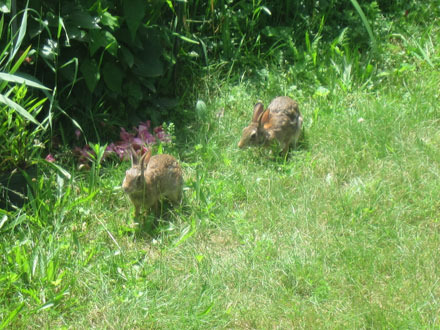


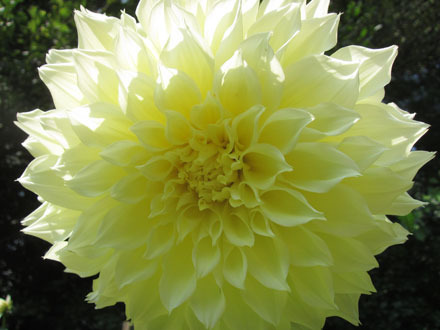
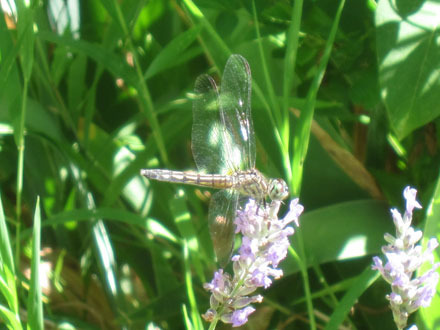




June 5, 2012
The fantastical world of Benjamin Lacombe
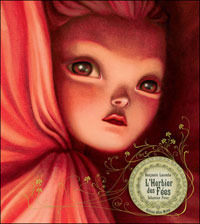 Nature stirs the imaginations of writers and artists. Benjamin Lacombe is a young artist from France whose work recalls that of Arthur Rackham and Brian Froud, but also dips into a spooky surrealism that is often unnerving and always compelling.
Nature stirs the imaginations of writers and artists. Benjamin Lacombe is a young artist from France whose work recalls that of Arthur Rackham and Brian Froud, but also dips into a spooky surrealism that is often unnerving and always compelling.
The images below are from his book L’Herbier des Fées, or The Herbarium of the Fairies, written in collaboration with Sebastien Perez (available in several languages, though not yet in English). It tells the story of a fictional Russian botanist who ventures into a strange forest searching for the secrets of immortality. The book is designed as a collection of his sketches, letters and photos, all meticulously illustrated by Lacombe. The influence of Leonardo Da Vinci is evident, from the brown ink studies to the chiaroscuro and classic poses of the characters. There is also an interactive version of the book, which you can see in the video below.
The pages of this book — and many of Lacombe’s books — overflow with imaginative creatures that often blur the lines between flora and fauna, between living and artificial. Some of the pages include die-cuts and transparent overlays to give added dimension to his mysterious world. His beautiful flowers and fairies often seem like they could devour us, even as we are fascinated by them. It is an amazing and unique vision that explores our fear of the natural world as much as our fascination with it.

Artwork © by Benjamin Lacombe

Artwork © by Benjamin Lacombe

Artwork © by Benjamin Lacombe

Artwork © by Benjamin Lacombe
* * *
Here is a video trailer for the book and iPad app:
Here is a video about the making of the interactive book:
Here is another video about the making of the interactive book:
Here is his official blog with even more amazing artwork.
* * *
March 14, 2012
Drawing the natural world
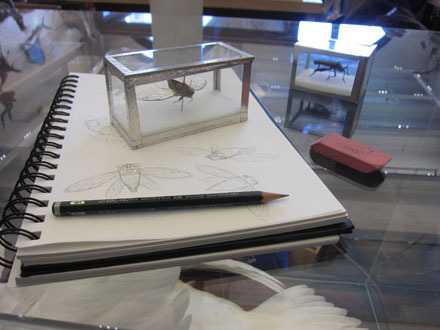
A few weeks ago I attended a NESCBWI workshop on drawing animals, which took place at the Edna Lawrence Nature Lab at the Rhode Island School of Design. The lab is an amazing place, a huge room filled with preserved animals, insects, fish, fossils, seeds, stones — a virtual survey of the natural world. For this particular event there were also several live animals brought in, including a huge tortoise, a ferret, and a parrot.
Most of the afternoon was spent drawing, and people wandered freely about, drawing whichever animals interested them. The entire room, with its ceiling-high glass cabinets and boxes of specimens, had the feeling of a 19th Century naturalist's study, and one could imagine Darwin walking through the door at any moment.
 As an artist who loves animals, I found the preserved animals unnerving and fascinating at the same time. You feel a mixture of awe, curiosity, sympathy, and connection with the once-living creatures, you wonder where they came from, what kind of life they led. There is a long history of artists drawing deceased animals, from Leonardo to Audubon. You can observe an amazing amount of detail from such close observation, though the drawback is that the drawing often ends up as lifeless as its subject.
As an artist who loves animals, I found the preserved animals unnerving and fascinating at the same time. You feel a mixture of awe, curiosity, sympathy, and connection with the once-living creatures, you wonder where they came from, what kind of life they led. There is a long history of artists drawing deceased animals, from Leonardo to Audubon. You can observe an amazing amount of detail from such close observation, though the drawback is that the drawing often ends up as lifeless as its subject.
The whole day was very inspiring, and seeing so much of the natural world crammed into one room really makes you think about how much is alive all around us, and how everything is connected. Hopefully these kind of creatures will remain alive and healthy in the wild, so that nature centers like this don't become the only places to find them.
Here are some of my photos and sketches from the day. Thanks to Christina Rodriguez for organizing such a great workshop!

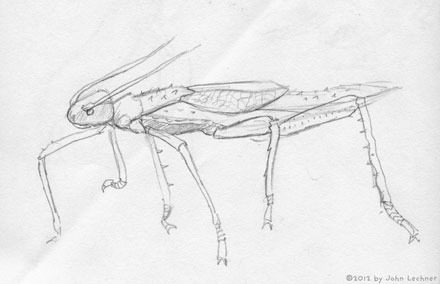


~ ~ ~

~ ~ ~

~ ~ ~
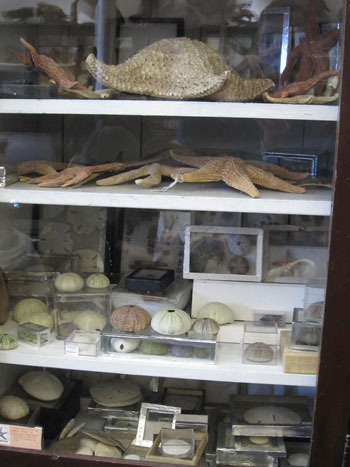
~ ~ ~

~ ~ ~

~ ~ ~
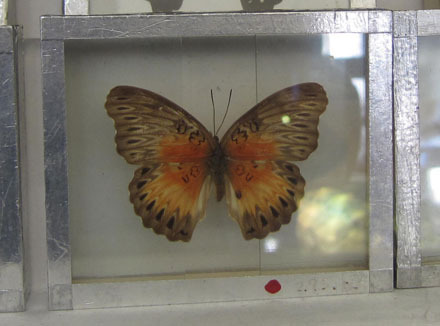
~ ~ ~

~ ~ ~
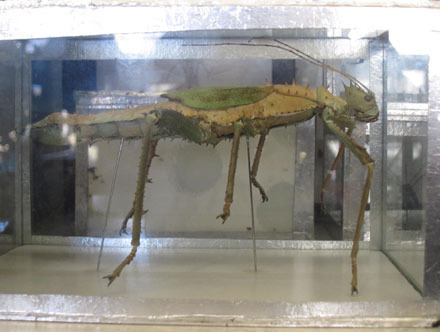
~ ~ ~

~ ~ ~
Finally, here's a short video taken at the end of the day – exercise time!
~ ~ ~
February 24, 2012
Hymn to the Earth: the evocative photographs of Ron Rosenstock

"Morning Mist" © by Ron Rosenstock
Black and white photography allows us to see the world in a different way. By removing all color, it highlights other qualities of the world around us – texture, contrast, composition. It simplifies and abstracts what we see, revealing the world in its pure form.
The images on this page are by renowned landscape photographer Ron Rosenstock, who currently has an exhibit at the Worcester Art Museum. Here is an excerpt from a review in The Boston Globe by Mark Feeney:
The effect Rosenstock strives for in these pictures, mostly taken in rural Ireland but also in places as diverse (and beautiful) as Italy and Maine, Morocco and New Zealand, is of a higher, purer reality. You could almost describe it as a kind of unreality, given that exaltation and ineffability are forms of reality so rare as hardly to qualify as real. That Rosenstock achieves his aim so often is as much a tribute to the depth of emotion he brings to his work as it is to exacting technique.
The exhibit runs through March 18th, and I highly recommend it. You can see a lot more of Ron's work at his website.

Photo © by Ron Rosenstock

"Noon Shadows" © by Ron Rosenstock

Photo © by Ron Rosenstock

"Monks Robes, Abbey of Sant' Antimo" © by Ron Rosenstock

"Stone Circle at Sheeffry, County Mayo" © by Ron Rosenstock
December 29, 2011
A little poem by Robert Herrick
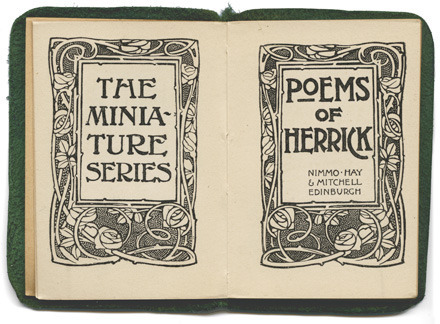
It's the end of another year. I've been too busy to post here lately, not even to mark the arrival of winter. (If you want to see what I've been up to lately you can read my personal blog.) For my final post of 2011 at The Untended Garden, I've dug up a short poem by Robert Herrick (1591-1674).
It comes from a tiny book that I purchased for 50¢ at my library book sale. It was printed in Edinburgh with a green cloth cover and no date, and the image above is only slightly smaller than the actual book. It's one of those mysterious little books that makes you wonder how many people have owned it and what an incredible journey it must have had. It's amazing to think that a few dozen words inspired by a walk in the garden can still be appreciated four hundred years later.
* * *
THE OLIVE BRANCH
Sadly I walked within the field,
To see what comfort it would yield;
And as I went my private way,
An Olive-branch before me lay;
And seeing it, I made a stay,
And took it up, and viewed it; then
Kissing the omen, said "Amen:
Be, be it so, and let this be
A divination unto me;
That in short time my woes shall cease,
And Love shall crown my end with peace."
— Robert Herrick
* * *
I hope everyone has a great new year, and I look forward to further exploring art and nature in 2012. If you have a favorite artist or writer who uses nature in their work, feel free to share!
October 20, 2011
The Witness Tree Project – art inspired by nature
[image error]
A Witness Tree is a very old tree that has "witnessed" great events in history. There are such trees are found all over the world, which are treasured by those who know them. One example is a honeylocust tree in Gettysburg, which is the only tree still standing that was there when Abraham Lincoln dedicated the battlefield cemetery in 1863. Witness trees are living links to the past, yet they don't last forever, and it's always sad when we lose one to storms or disease.
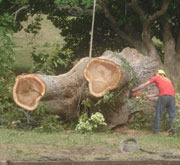
Ancient pecan tree at the Hampton National Historic Site
In 2009, two professors at the Rhode Island School of Design, in collaboration with the Hampton National Historic Site, created what would become the Witness Tree Project, now in its third year. Professors Dale Broholm (Furniture) and Daniel Cavicchi (History) and the National Parks Service designed a program where students study and produce artworks from witness trees that have recently fallen. It is interdisciplinary learning at its best, as students study the history and culture surrounding the tree, and use that to inform their work.
As their website explains: "In addition to classroom study, the Project variously involves field trips, guest lectures, exhibitions of students' objects, and other events that highlight the significance of material culture, landscape, and design in learning about American history."
The first tree used in the program was a pecan tree that had lived for over 150 years at the Hampton National Historic Site, a former plantation near Baltimore (see photo above). In 2010, they worked with trees from both the George Washington Birthplace National Monument and Sagamore Hill (the homestead of Theodore Roosevelt). This year, students are working with an historic Elm from the Olmsted site.
Below are just a few of the pieces created by students from 2010, and you can see many more amazing pieces here. Artwork from the current year's project will be posted to their website later this year.
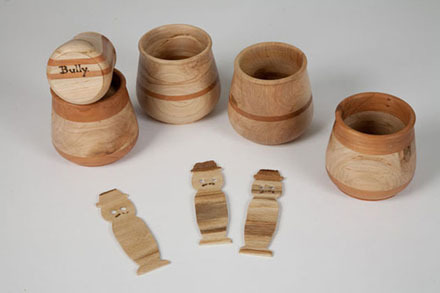
Athena Lo
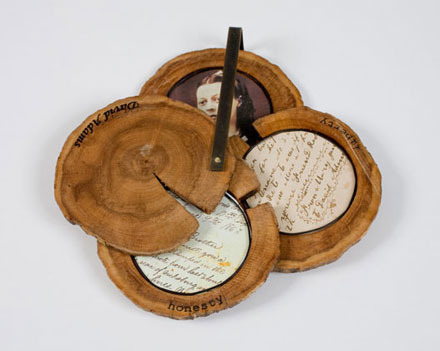
Elish Warlop

Ben Kicic
[image error]
Clara Zavani

Brett Dunnam

Christopher Gent
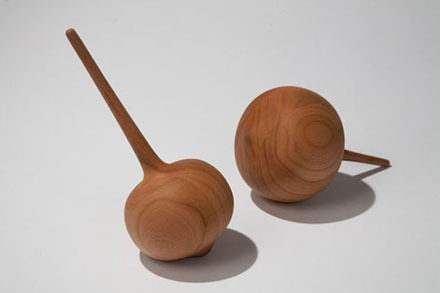
Brendan Kiem

Desmond Delanty

Yu-Chuan Liu
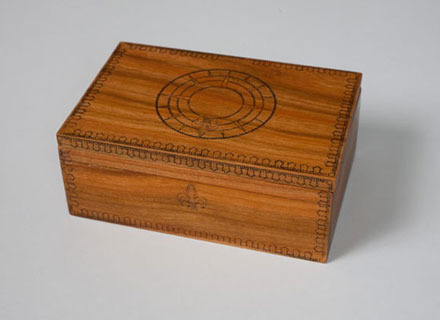
Ming Yi-Wong
Additional reading: Students Collaborate with National Park Service (article).
September 23, 2011
Autumn, in painting and poetry
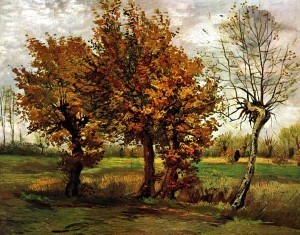
Autumn Landscape With Four Trees - Vincent van Gogh
Autumn is here once again! The changing of the seasons is a favorite topic here at The Untended Garden, perhaps because so many artists have been inspired by the seasons.
Today I present a famous painting by Vincent Van Gogh, appropriately entitled Autumn Landscape With Four Trees (click the image for a larger view.) What's most interesting to me about this painting is the ordinariness of the scene. He did not choose a majestic vista or mountaintop, as so many landscape artists do, he chose a clump of very ordinary, almost misshapen trees – one of them has even lost its leaves. And yet the artist saw something beautiful in them, and chose to immortalize this view forever, so that we could all experience this moment the way he did.
Likewise, Emily Dickinson captured her own particular notion of autumn in the poem below. Even though autumn is beautiful, she seems to say, it also portends a passing of time that is not so easily accepted.
* * *
As Summer into Autumn slips
And yet we sooner say
"The Summer" than "the Autumn," lest
We turn the sun away,
And almost count it an Affront
The presence to concede
Of one however lovely, not
The one that we have loved —
So we evade the charge of Years
On one attempting shy
The Circumvention of the Shaft
Of Life's Declivity.
– Emily Dickinson
* * *
July 18, 2011
North by East: the woodcuts of Rockwell Kent
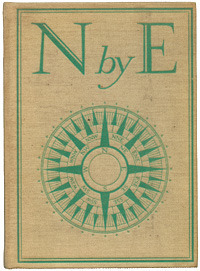 Last summer I did a whole series of posts about the ocean, and how it was depicted in books, paintings and films. My post about Moby Dick featured an illustration by Rockwell Kent, known for his dramatic woodcut illustrations. A few months ago I came across another nautical book by Kent, this time written by him as well, called N by E.
Last summer I did a whole series of posts about the ocean, and how it was depicted in books, paintings and films. My post about Moby Dick featured an illustration by Rockwell Kent, known for his dramatic woodcut illustrations. A few months ago I came across another nautical book by Kent, this time written by him as well, called N by E.
Rockwell Kent was a traveler and adventurer who spent his life painting and drawing the epic vistas of the nature. N by E is, in the words of the preface, "the story of an actual voyage to Greenland in a small boat: of a shipwreck there and of what, if anything, happened afterwards."
These illustrations are little gems of composition and line. They are all the more remarkable when you realize they are woodcuts, where the white is carved away and the black areas left alone. There is no "undo" in this process. There's something stark and powerful about these images, which evoke more drama with two colors than many artists do with a full palette.
* * *
John Lechner's Blog
- John Lechner's profile
- 18 followers


